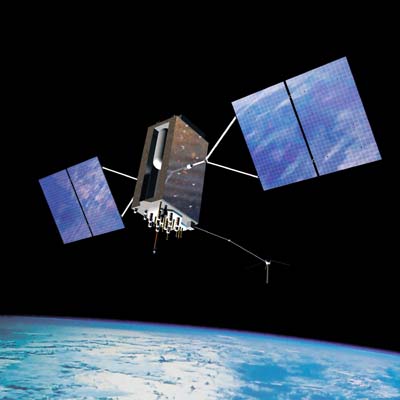The Air Force’s to p civilian space official, Gary Payton, told lawmakers last week that the next-generation GPS III satellite program is on solid footing with its three-block acquisition approach where “each one delivers more capabilities for the warfighter, as opposed to trying to leap dramatically to a brand-new, almost ‘Battlestar Galactica’ kind of delivery.” Responding to questions about a purported gap in GPS coverage, Payton continued to list the differences between GPS III and its predecessor GPS IIF, the first of which is now slated for launch in the first half of Fiscal 2010, saying that the Air Force undertook independent cost estimates and sustained competing industry teams through four years of systems engineering and technology risk reduction efforts so it has “much more confidence” in GPS III acquisition. He said GPS III is “the first and currently still successful implementation of the ‘back to basics’ philosophy in our space acquisition.” In fact, he added, “GPS III design work has been progressing faster than scheduled.” (See below) Testifying at the same May 20 hearing of the Senate Armed Services strategic forces panel, Gen. Robert Kehler, Air Force Space Command boss, said, “We believe we have worked through the problems on the IIF satellites … [and] GPS III is progressing very well.” That, and the fact that there are 33 satellites (including three on-orbit spares) on orbit now, prompted Kehler to say there’s “a little bit of breathing space … if this gap arises.” (Payton written testimony; Kehler written testimony)
p civilian space official, Gary Payton, told lawmakers last week that the next-generation GPS III satellite program is on solid footing with its three-block acquisition approach where “each one delivers more capabilities for the warfighter, as opposed to trying to leap dramatically to a brand-new, almost ‘Battlestar Galactica’ kind of delivery.” Responding to questions about a purported gap in GPS coverage, Payton continued to list the differences between GPS III and its predecessor GPS IIF, the first of which is now slated for launch in the first half of Fiscal 2010, saying that the Air Force undertook independent cost estimates and sustained competing industry teams through four years of systems engineering and technology risk reduction efforts so it has “much more confidence” in GPS III acquisition. He said GPS III is “the first and currently still successful implementation of the ‘back to basics’ philosophy in our space acquisition.” In fact, he added, “GPS III design work has been progressing faster than scheduled.” (See below) Testifying at the same May 20 hearing of the Senate Armed Services strategic forces panel, Gen. Robert Kehler, Air Force Space Command boss, said, “We believe we have worked through the problems on the IIF satellites … [and] GPS III is progressing very well.” That, and the fact that there are 33 satellites (including three on-orbit spares) on orbit now, prompted Kehler to say there’s “a little bit of breathing space … if this gap arises.” (Payton written testimony; Kehler written testimony)
The Air Force is requesting about $141 million for initial enlistment bonuses in its fiscal 2026 budget, while Space Force wants $13 million.
